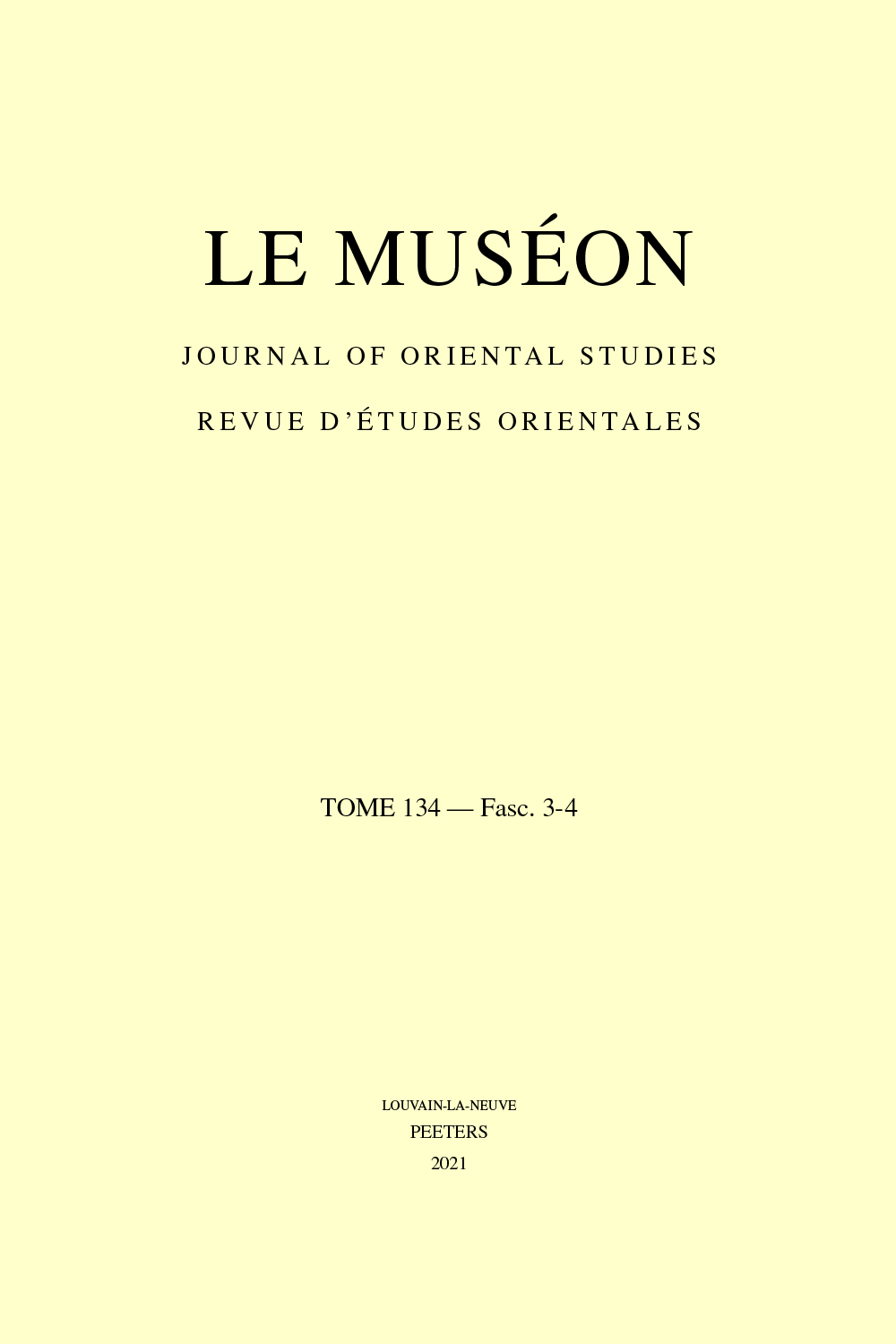 previous article in this issue previous article in this issue | next article in this issue  |

Preview first page |
Document Details : Title: The Dome of the Rock in Mecca Subtitle: A Christian Interpretation of Muḥammad's Night Journey in a 14th-Century Italian Map (Parma, Biblioteca Palatina, Ms. Parm. 1612) Author(s): DI CESARE, Michelina Journal: Le Muséon Volume: 128 Issue: 1-2 Date: 2015 Pages: 203-228 DOI: 10.2143/MUS.128.1.3080621 Abstract : The paper focuses on a puzzling depiction of Mecca found in the map made by the Pizigano brothers in 1367 (Parma, Biblioteca Palatina, Ms. Parm. 1612). The holy city of the Muslims is depicted as a circular shrine containing a hanging lamp and a suspended casket, in front of which is a kneeling figure. The respective legends identify the shrine as the 'tower of Mecca', containing the 'Ark of the Law of Muḥammad', and the figure as Muḥammad himself revering the Ark. In all other coeval maps Mecca is instead depicted as a town and accompanied by the figure of a kneeling pilgrim, while the respective legends explain that this is where Muslims go to revere the tomb of their Prophet, according to Western tradition. In fact, the iconography and text of the Pizigano map does not follow this tradition as they make it quite impossible to identify the building as the Ka'ba and the 'Ark of the Law' as Muḥammad’s coffin. The iconographical analysis will show that the 'tower of Mecca' resembles the shape of the Dome of the Rock-Templum Domini as it is depicted in this very map and described, along with the relics believed to be kept there, in Medieval Latin texts. In particular, through an examination of the translation of the Kitāb al-mi'rāj, made in 1264 by Bonaventura of Siena as Liber Scale Machometi, it will be shown that the depiction of Mecca in the Pizigano map represents Muḥammad’s isrā' as a vision of the Temple of Jerusalem. Moreover, the collation of the legends referring to Mecca from the coeval maps will show that the association of the arca legis Machometi with Muḥammad’s Night Journey made by the Pizigano brothers derived from an error in the manuscript transmission. |
|


